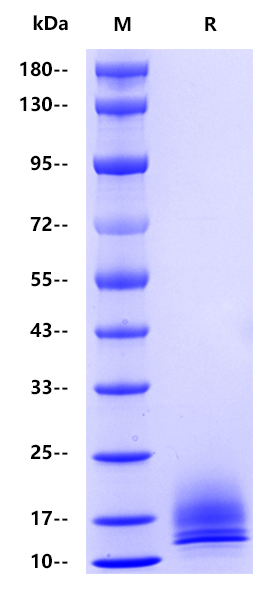>95% by SDS-PAGE
12 months from date of receipt, -20 to -70 °C as supplied. 6 months, -20 to -70 °C under sterile conditions after reconstitution. 1 week, 2 to 8 °C under sterile conditions after reconstitution. Please avoid repeated freeze-thaw cycles.
ANKRD30A has been previously identified as NY-BR-1 or antigen B726P. It was identified based on spontaneous humoural immune responses in breast cancer patients (Jäger et al. 2001, 2002). The protein is regarded as a putative transcription factor, as it contains a bipartite nuclear localization signal motif and a bZIP site (DNA-binding site followed by leucine zipper motif). Additional structural features include five tandem ankyrin repeats, implying a role for ANKRD30A in protein–protein interactions. In view of its highly restricted expression pattern, ANKRD30A may be considered as a breast differentiation antigen that could represent a suitable target for immunotherapy. Indeed, it was found in 80% of breast cancer specimens, while tumours of other histological types were ANKRD30A-negative. It was also identified in normal breast, normal testis, was inconsistent in prostate, and not found in other tissues.

2μg(R: reducing conditions)